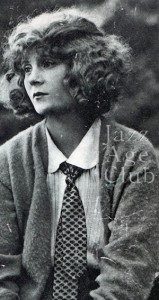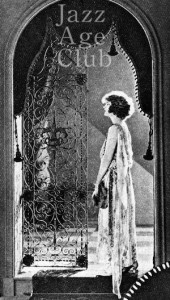Paddy the Next Best Thing (1923)
Herbert’s Wilcox’s second film with Mae Marsh, following The Flames of Passion, was Paddy the Next Best Thing, a romantic drama about a young tomboy and her growing love for a rich landowner set in Ireland and London, once again directed by Graham Cutts.

After filming The Flames of Passion in the summer of 1922, Mae Marsh returned to New York toward the end of August but her stay at home was extremely brief because she arrived back in Southampton aboard Olympic 9th September and settled in at the Savoy Theatre.
The Graham-Wilcox production company, with Graham Cutts as director, started filming at the Famous Players Lasky studio in September 1922. Like its predecessor it was a lavish production and once again Lucile created all the costumes for the cast.
The film was adapted from Gertrude Page’s novel and play that was staged at the Savoy Theatre in 1920. The family of the Adairs lived in Mourne Hall amidst picturesque countryside and the story centred on the romance of Paddy Adair played by Mae Marsh, a kind, yet impulsive and wild Irish girl who was a son to her father (Sir Simeon Stuart), who would have dearly liked a boy. Hence Paddy as ‘the next best thing’.
The opening of the film showed a yacht race between Paddy and her father in which Paddy very nearly gets drowned. Rescued by her father they arrive back on land where she meets Lawrence Blake (Darby Foster), the polished man of the world and the owner of a neighbouring estate. In her eyes he has disgracefully neglected the land of his birth by shooting big game in India in preference to leading the life of an Irish gentleman and conceives an immediate dislike of him.
For Paddy, Lawrence exuded a self-satisfied superiority and she delighted in trying to bring him down earth. In the meantime, Paddy encourages Jack O’Hara (George K. Arthur) in his quest for her sister Eileen (Lillian Douglas) but she has fallen for Lawrence.
There were various social gathering in Mourne Lodge, including a lavish birthday party, a fox hunt and a ball featuring an elaborate ballet (overall thought to be incongruous) and an Irish country dance. Throughout, verbal skirmishes between Paddy and Lawrence take place.
Eventually, Lawrence tells Paddy that he does not care for her sister and she calls him a cad for having led her sister on, but then he tells her that she is the woman he loves. ‘One day I will break down your defences’ he says. Paddy replies defiantly ‘I despise you’. This forces Lawrence to leave for Europe and India and Jack also goes abroad to seek his fortune.

The death of the girl’s father breaks up the home. Sadly General Adair saved little of his fortune and Paddy visits the desolate shuttered mansion and has to go and live with her doctor uncle in Shepherds Bush and works as a dispenser. When Blake returns, he tracks Paddy down and again declares his love without success as she judges him to be a mere philanderer. In a realistic street fight Lawrence proves his mettle and Paddy binding up his wounds, impulsively kisses him. She realizes that perhaps she does love him but still resists with her usual fervor.
Paddy receives a telegram announcing Jack had returned home with a fortune and had become engaged to her sister Eileen. She rushes back to Ireland. One evening, leaving her sister and Jack, Paddy wanders off alone into the hills feeling lonely and unloved. She is soon lost in a dense fog on the edge of a treacherous bog. Lawrence who had followed her immediately to Ireland arrives to hear the tragic news that Paddy is lost and heads the search party with the villagers. Their torchlight procession showed hundreds of points of light moving across a mist shrouded moor. Lawrence arrives just in time to snatch Paddy from death and Paddy at last confesses her long repressed love that concludes the usual happy ending.
A warm hearted romance, it was an outstanding success and was given a trade show in January 1923. It was regarded as being as good technically in terms of staging and photography as Flames of Passion. The Bioscope thought the film was ‘outstanding’ and added ‘a delightful entertainment splendidly presented…. a genuine triumph’ and Kine Weekly proclaimed ‘this is another film which marks a milestone in the improvement of British screen art and its success as a feature is assured’ and continued ‘there is not a dull moment in the whole picture and the excellence of the production does not allow one to be hyper-critical about either the theme of the reality of any particular incident.’

The story itself, although it had a deep human appeal, was thought to be slender and slight and rather unconvincing and disjointed in places. And yet, it was believed, the screen version gained additional power to convey the sentiment and sweetness more convincingly. The Bioscope clarified this thought by saying ‘Cutts has succeeded in evolving a charming entertainment from slender material and is the best evidence of his skill.’
Mae Marsh as Paddy was regarded as at her best and a delight, illustrating the heroines many moods with art and realism from tomboy high spirits to hot tempered anger and gentle sympathy. Her methods were infinitely varied, her work was never monotonous and she created a consistent and carefully worked out characterisation of a likeable, yet fiesty heroine. Mae Marsh returned to the USA and arrived in New York 17th November 1922 aboard Berengaria.
In January 1923, Cutts and Wilcox visited America to promote the distribution of Paddy The Next Best Thing. Variety was impressed with the film ‘this is one of the best British films yet made’ and added that ‘Cutts has done his work admirably.’ On return to London Cutts left the Graham-Wilcox concern, perhaps because Herbert Wilcox had aspirations to direct rather than produce. Within a short space of time Cutts had joined the newly formed Balcon-Saville-Freedman company with Michael Balcon, Victor Saville and John (or Jack) Freedman (related to the Freedman from the distributor W&F) and went on to direct the ground-breaking Woman to Woman (1923).
All images and text © copyright Gary Chapman / Jazz Age Club and must not be re-used without prior consent
Notes
Others in the cast included Nina Boucicault (Mrs Blake), Haidee Wright (maiden aunt), Marie Wright (maiden aunt), Mildred Evelyn (Doreen Blake), Tom Coventry, Mildred Evelyn, Bernard Vaughn and Marie Ault.










